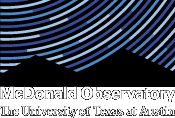Planet Orbiting Nearby Barnard's Star Disproved
Astronomers have disproved a 2018-announced planet orbiting Barnard’s Star, the second-closest star to our Sun. The findings are based on observations with the Habitable Zone Planet Finder instrument on the Hobby-Eberly Telescope.

